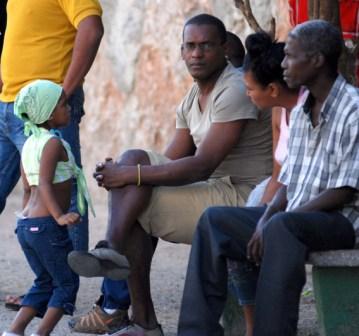Shadows over Cuba’s Summer
By Patricia Grogg

HAVANA TIMES, June 2 (IPS) – Cuba’s hurricane season is beginning amid intense rains that have caused flooding in several provinces. At the same time, the country is beginning to take strict measures to conserve electricity, which if not observed will mean the return of blackouts – so especially enervating in summer months.
The hurricane season extends from June 1 to November 30, and this year’s could be an active one. Nonetheless, since 2007 Cuban meteorologists have avoided publicly announcing their forecasts for the Atlantic Ocean basin, a region that includes the Caribbean Sea and the Gulf of Mexico.
However, an expert with the Cuban Institute of Meteorology, Gisell Aguilar, acknowledged on national television that the Caribbean island has “high probabilities of being hit by at least one hurricane,” after she pointed out the possibility of active tropical depressions during the current stage.
The formation of hurricanes alternates between periods of low and high activity lasting from 25 to 30 years. From 1981 to 1994 there were fewer such occurrences, but since that date their frequency has increased.
Specialists at the US National Hurricane Center predict the appearance this season of twelve tropical storms and six hurricanes – two of which could be of high intensity. These hurricanes involve serious risks for the entire Caribbean area, usually causing considerable losses of human life and significant property damage.
Cuba Still Reeling from 2008 Hurricanes
In 2008, the appearance of hurricanes Gustav, Ike and Paloma cost Cuba approximately $10 billion, according to official estimates. The concern is that the upcoming season could find the country especially vulnerable since it has not completely recovered from the three previous tropical cyclones.
According to data from Cuba’s state-run press, 530,332 homes were damaged by those three hurricanes, while another 69,700 were affected by previous storms. Of this total of 600,032 unites were effected, 91,556 totally destroyed.
Faced with this potential for disaster, residents of the capital incessantly wonder what would happen to Havana’s precarious housing stock if were in the path of one of these “monsters.”
The city of 2.2 million residents has more than 500,000 housing units, with construction types ranging from solid concrete building to flimsy shanties patched together with sheet metal and wooden planks.
In Havana, there are 46 illegal settlements in which more than 18,000 people live in over 6,200 housing units. A program begun in 2005 to address the national housing shortage (estimated at more than 500,000 units) has been seriously hampered by the setbacks suffered from hurricanes.
Authorities note that the national civil defense system has permitted a reduction in the loss of lives; nonetheless, that system has not had sufficient effect on mitigating these storms’ economic impact due to “vulnerabilities accumulated in almost all sectors and infrastructure of the country.”
In an official study, the poor state of a high percentage of the housing units damaged by the storms were among those “inadequacies” that must be corrected to strengthen the country’s capacity to respond to hurricanes, intense rains or other harsh weather conditions.
The list of other problems found includes delays in clearing out storm sewer lines and noncompliance with regulations concerning the original sites chosen for structures, the securing of roofs and the proper depths for the sinking of electric posts and telephone poles.
Strict Energy Saving Measures
Concurrent with the beginning of the hurricane season, this Monday the government approved strict measures related to conserving electric power. The aim is to curb excess public and residential consumption, which the country is unable to finance.
A resolution signed by the minister of the Economy and Planning, Marino Murillo – a document not yet formally released, but now circulating unofficially – alerts that in the first four months of this year, 40,000 more tons of fuel were consumed for electricity generation than planned for.
According to the document, a reduction of 12 percent in consumption by the state sector is necessary from June to December to meet the budget. If these regulatory measures are not successful, it will be necessary to revert to “planned blackouts,” adds the resolution.
The energy-cutting steps will be carried out through a consumption plan for each province, whereby each municipality, neighborhood and block will be supervised. “Negligence and waste can lead to these plans not being respected, and electricity cuts will subsequently result,” noted Julio Vazquez, deputy minister of the Economy Ministry.
Officials of the state-run Union Electrica company have assured that the problem is not one of generation, but fuel supply. In this respect, Vazquez added that Cuba has the capacity to generate more electricity than it consumes, but it has been forced to cut back on this expense because of the world economic crisis.
According to official sources, the recession and the impact of the three hurricanes in 2008 forced the Raul Castro government to revise its forecasted of growth in gross domestic product (GDP) for this year down from 6.0 percent to 2.4 or 2.5 percent, which portends further – yet still unannounced – restrictions in consumption.
Translation by Havana Times
